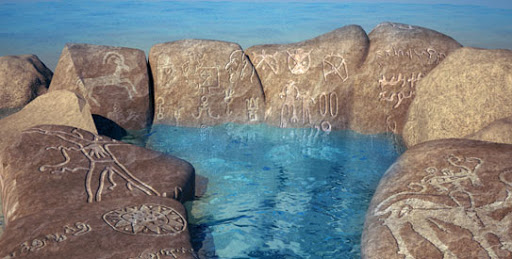Preservation of pre-historic rock carvings in Diamer Basha Dam project area
LAHORE – Besides initiating construction work on the Main Dam of Diamer Basha Dam Project, Pakistan Water and Power Development Authority (WAPDA) is also gearing up for implementation of a Cultural Heritage Management Plan in the project area with a view to fulfilling its national and international obligations for construction of water and hydropower projects.
Also Read: Federal government allocates funds for various schemes in karachi
The Plan aims at the preservation of prehistoric rock carvings and inscriptions to be submerged in the water reservoir of Diamer Basha Dam, setting up a museum and promotion of cultural tourism in Gilgit-Baltistan, particularly in Chilas and its suburban areas.
State-of-the-art Cultural Heritage Management Plan for Diamer Basha Dam Project has been devised by the international experts of the highest repute including Dr. Harald Hauptman hailing from Institute for Rock Carvings and Inscriptions, University of Heidelberg, Germany, in conformity with the World Bank, the Asian Development Bank, United Nations Educational, Scientific and Cultural Organisation (UNESCO) and national and international procedures and standards.
According to the details of the Cultural Heritage Management Plan for Diamer Basha Dam Project, about 5000 most important rock carvings and inscriptions ranging from 7th millennium BC to the 16th century AD would be 3-D scanned, documented, replicated and relocated. Protective treatment is also planned to be applied for important carved rock surfaces in the water reservoir drawdown band in addition to the on-site protective mitigation through barriers, screens, signage, bracing, etc.
Preservation of rock carvings would not only provide an insight into the history of various people with different social, cultural, and political traditions as well as religious beliefs but also exhibit the strategic importance of the region.
The Cultural Heritage Management Plan also includes restoration and renovation of Chilas Fort, the establishment of a museum, and the development of archives/library.
Various measures relating to the promotion of cultural tourism in the Project area i.e. Chilas and its vicinities also constitute an integral part of the Plan. Capacity building of the local communities would also be ensured under the Plan so as to enable them to become tourist guides. WAPDA has strategized implementation of the Cultural Heritage Management Plan side by side construction activities on the Diamer Basha Dam Project.

